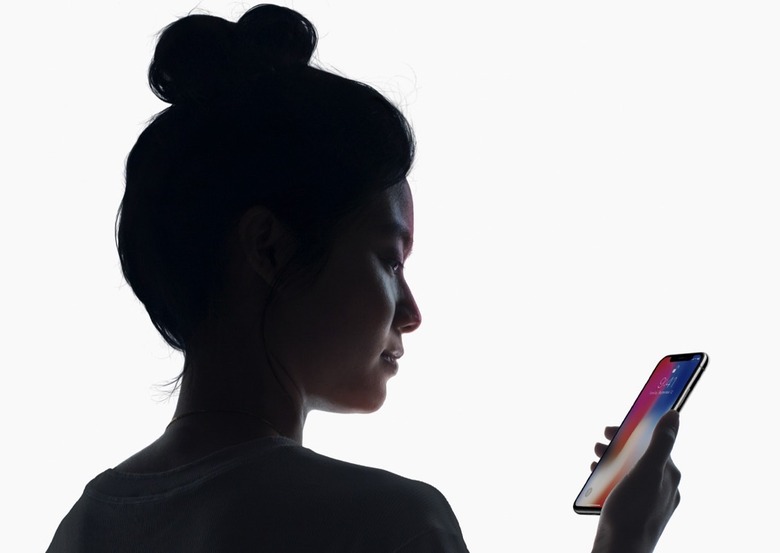Apple Is Working On New Technology That'll Take Face ID To The Next Level
Though Face ID on the iPhone remains the most reliable facial recognition scheme you can find on a smartphone today, it's not without its shortcomings. While Face ID does a remarkable job of identifying individual users and detecting fraudulent authentication efforts, it's still possible for twins of family members who closely resemble each other to trip up the software. Back when the iPhone X first launched, you may recall a flood of videos demonstrating this edge-case vulnerability sprouting up on YouTube.
Face ID hasn't changed much since its first incarnation, but that's poised to change once Apple releases its 2019 iPhone lineup. According to a number of credible sources, Apple's forthcoming iPhone models will incorporate a next-gen version of Face ID that will be both faster and more reliable. What's more, Apple has been busy working on techniques to better discern between twins, siblings, and other family members who happen to bear an uncanny resemblance to each other.
In a new patent published this week by the USPTO, Apple details a method by which Face ID would be able to take advantage of "subepidermal imaging" in order to more accurately identify users. As the name implies, subepidermal imaging would be able to identify features underneath the skin, such as blood vessels and veins.
The patent, which can be viewed in its entirety over here, reads in part:
Assessment of subepidermal features during the facial recognition authentication process may be useful in distinguishing between users that have closely related facial features (e.g., siblings or twins).
In addition, assessment of subepidermal features may be used to prevent unlocking of the device by an unauthorized user wearing a mask or using another face replication method.
The patent further explains that while outward facing facial features between relatives can appear similar, vein patterns "in the subepidermal layers of the face are typically unique to an individual" and even vary between identical twins.
Thus, assessment of the veins (and vein patterns) in the subepidermal layers of the face may be used to distinguish between siblings, twins, or other users with similar facial features on the surface of the face. In some embodiments, absorption properties of blood at a selected wavelength may be used to detect vein or other blood vessels in the subepidermal layers. Absorption properties of blood vessels may be useful in differentiating vein features in the eyes of the user.
While it's not likely we're going to see Apple implement this supidermal imaging technology this year, the patent illustrates that Apple is still working incredibly hard to enhance overall Face ID functionality and make its already secure biometric authentication scheme that much more robust.
As a point of interest, the video below shows Face ID failing when presented with two family members who look alike.
